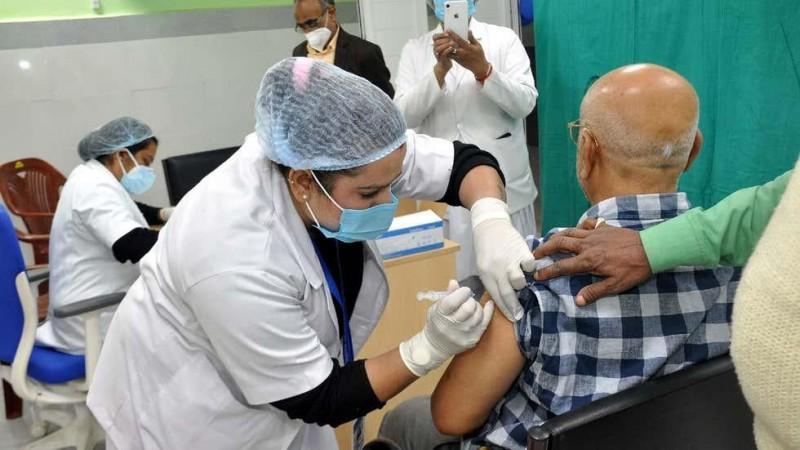The world has reached the milestone of administering one billion doses of COVID-19 vaccines in four months after the World Health Organization (WHO) authorized the first vaccine for emergency use and roll-outs began in countries such as the United States and the United Kingdom.
"It is an unprecedented scientific achievement. Nobody could have imagined that, within 16 months of the identification of a new virus, we would have vaccinated one billion people worldwide," says WHO chief scientist Soumya Swaminathan, according to Nature.
Around 1.16 billion doses of COVID-19 vaccines have been provided to over 570 million people as of 1 May 2021. This means that over 7.3 percent of the total global population of 7.79 billion have been administered at least one dose of a vaccine. Though, the speed at which the vaccines have been administered is remarkable, unequal distribution of the vaccinations highlights global disparities.
Inequality Exposed

While the unprecedented accomplishment has brought to the fore the perseverance of the international scientific community, researchers emphasize that the unequal distribution of vaccines among the nations, and within the nations internally, is undermining the collective effort. This can hamper the goal of vaccinating the entire world they warn.
Only ten nations account for nearly three-quarters of the total doses administered. It is important to note that two nations—China and the US—alone make up for about half the total of global administered COVID-19 vaccines.
As of 1 May 2021, China has given out 275.34 million doses, while the US has provided 245.598 million doses. However, the entire African continent has received only 17.96 million doses or only 2 percent of the global total.
Dr. Peter Hotez, a vaccine scientist at Baylor College of Medicine, noted that for high-income countries, guaranteeing global equity of vaccines is a matter of self-interest when it comes to overcoming the pandemic. "You can't do that with under a dozen countries fully vaccinated. In terms of saving lives and restoring the global economy, we need places like Myanmar and Papua New Guinea to be successful," he asserted.
Internal Disparity
Though a worldwide disparity is evident, the disproportion in the internal distribution within nations cannot be overlooked. A study conducted in the UK called attention to the racial and social-economic inequalities in the availability of vaccines. It was discerned that of the 1.1 million people above the age of 80 who received treatment at hospitals and clinics (between December 2020 and January 2021), 42.5 percent of the white participants had received the vaccination. However, only 20.5 percent of the black participants had been vaccinated.

An internal disparity exists within the US as well. According to The Centers for Disease Control and Prevention (CDC), as of 2 May 2021, data of race and ethnicity from 147,047,012 vaccinated individuals who received at least one dose was available only for 81,470,194 (55.4 percent) individuals.
Among these, 63.4 percent were where white, while Black, Hispanic, and Asian populations accounted for 8.7 percent, 12.5 percent, and 5.7 percent respectively. "Vaccinating only portions of the population is not an effective strategy, and leaves us vulnerable to new variants A global pandemic can only be met with a global response," cautioned Dr. Krishna Udayakumar, associate director for innovation at the Duke Global Health Institute in Durham, North Carolina.
India's Vaccine Woes
As of 2 May 2021, 154.21 million doses of COVID-19 vaccines have been given out in India. This sheer numerical enormity of the doses puts India in the third position globally. It also suggests that the number of doses administered would have been sufficient to vaccinate entire populations of several countries twice.
However, in relation to India's total population of nearly 1.4 billion, it is equivalent to only around 11.5 percent of the population. In actuality, only 1.97 percent of the population has been fully vaccinated in the nation that is considered the world's largest producer of vaccines.
Amongst multiple reports it is important that correct information be shared with the public. pic.twitter.com/nzyOZwVBxH
— Adar Poonawalla (@adarpoonawalla) May 3, 2021
Vaccine shortages have been reported in several states in India. For example, in Karnataka, the vaccination drive for individuals between 18-44 years of age, which was set to commence on 1 May 2021, was deferred due to a shortage of stocks. Both the indigenous vaccines—Covaxin from Bharat Biotech and Covidshield from Serum Institute of India—are said to be drastically short in supply.
In a recent release, Adar Poonawalla, CEO of SII, stated that "it is not possible to ramp up production overnight". In another recent report by Financial Times, Poonawalla was quoted saying that India could face a shortage of vaccines till July 2021.














